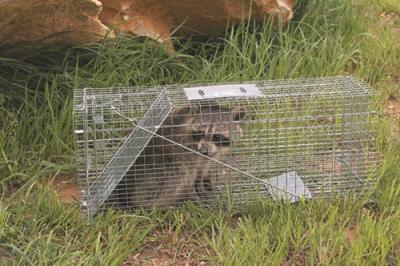
When conducting your wildlife control service it is always critical to select the proper size cage trap to match your target animal. There are several very good reasons for doing this.
Havahart traps are engineered and built for specific target animals based on the size and weight of those animals. For instance, a gray squirrel will not trigger a raccoon size trap because the trigger sensitivity is designed for a larger animal. Target species are listed within the description of each trap size and listed on the carton.
Another important consideration is that the trap’s size restricts the animal once it is caught, minimizing the injury it may do to itself. In the case of squirrels, using an improper larger trap would allow them too much space and movement, which would result in injury to the animal.

Backing out of the trap is another problem when using a trap that is too small for the target animal. This happens many times when trapping large raccoons. They enter the trap, grab the bait, the trap fires, the door comes down on their back and the raccoon backs out of the trap due to the trap not being large enough. In addition to not catching this animal when you had a chance, you have now educated the raccoon to avoid cage traps and created a trap shy animal which will be much more difficult to catch in the future.
Another reason the raccoon may have backed out of the trap is improper bait placement. When using the newer one door traps always place or hang your bait beyond the trigger pan towards the rear of the trap. This will allow the animal to enter and commit all the way in to the trap before it fires and the door will close properly and securely.
Follow these basic tips and you will be a more successful and profitable wildlife control operator.
Authored by:
Mike Goldstein
Woodstream

